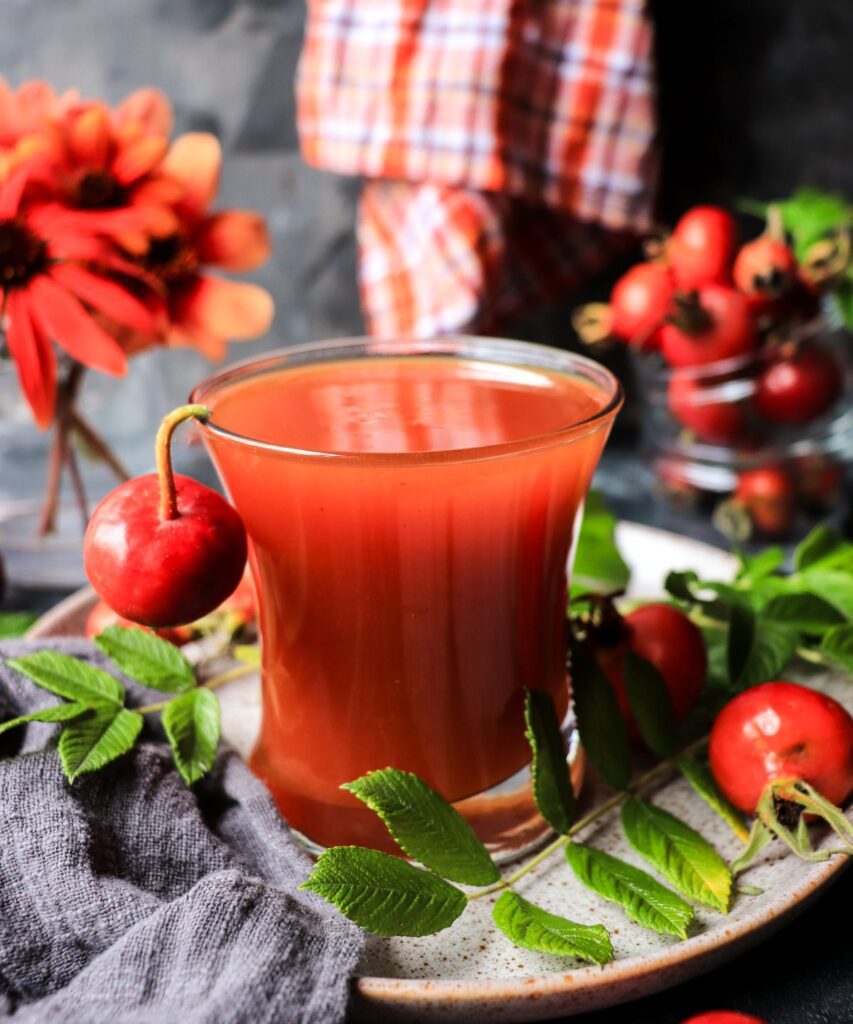
Looking for an easy and delectable way to savour wild rosehips? Homemade rosehip syrup offers a slightly tart, fruity, and floral aroma—perfect for use in tea, cocktails, and more.
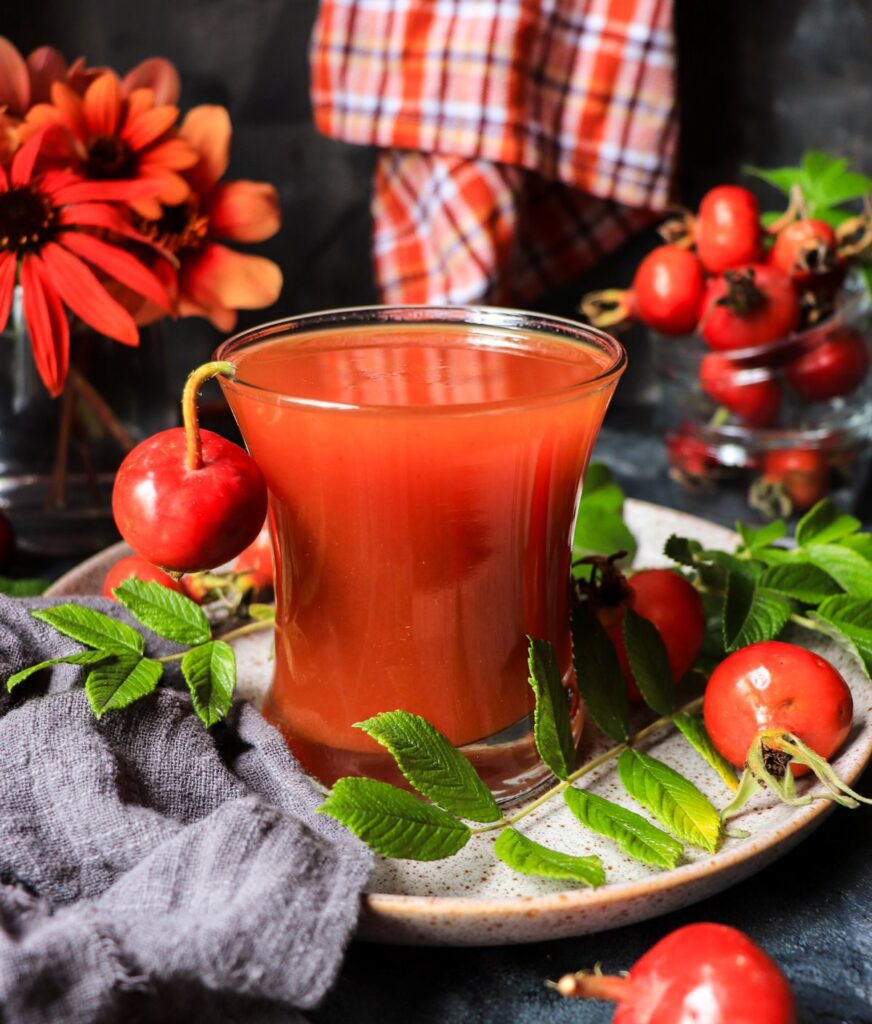
Hey, folks! Hope you’re well and enjoying the late days of summer.
Today, I am thrilled to share another tasty recipe that’s perfect for late summer and early fall. And most importantly, it features a fruit that Mother Nature offers us for free. So let’s enjoy the benefits of the forest and make some wild rosehip syrup.
What Are Rosehips? Are They Edible?
Rosehips are the seed-filled fruit of rose plants. They are accessory fruits; their edible parts develop from flower tissues. Rosehips vary in size, colour, and flavour depending on the species, providing a diverse range of options for foraging and use.
Rosehips are edible, but they can be tricky to prep due to the presence of irritating hairs and seeds that may cause skin or digestive issues. Wearing latex or nitrile gloves for handling them could be a good idea, especially if you have sensitive skin. And consume only the flesh, not seeds and hair.
Rosehip has sweet-tart or sweet-sour notes, similar to green apple or plum, and some varieties hint at cranberry or hibiscus. The flavour generally offers floral, sweet, and tangy notes.
Try Rosehip Tea with Honey or Apple Rosehip Jam.
Rosehips – Health Benefits & Side Effects
Rosehips are rich in antioxidants and anti-inflammatory compounds that support immunity and may help alleviate joint pain and inflammation. They often contain more Vitamin C than oranges. You can often find rosehip oil in skin care products.
As always, keep in mind that natural remedies can sometimes worsen certain health conditions or interact with medications. Before consuming rosehips, research their potential effects, consider any personal health risks, and, ideally, consult your healthcare provider for guidance.
For instance, because rosehips are high in Vitamin C, they may increase the risk of certain types of kidney stones in susceptible individuals. Please note that Havoc in the Kitchen does not provide professional medical advice or a complete list of possible side effects.
Homemade Rosehip Syrup from Fresh Fruit
Making rosehip syrup from fresh rosehips is a rewarding experience. This fragrant syrup preserves the vibrant flavour (and colour!) and some nutrients of the fruit, which are rich in vitamin C and antioxidants. Cooking the syrup reduces some nutrients, but it’s still a lovely treat. Some say it’s a helpful remedy for colds.
Rosehip syrup is sweet and tart with a floral undertone. Its tartness can remind you of citrus or berries. For this recipe, I used less sugar, which is a bonus for my health. Certainly, the lower amount of sugar will decrease the shelf life, so you may want to use equal parts of the fruit concentrate and sugar.
Can You Make it From Dried Fruit?
Yes, you can absolutely make rosehip syrup from dried rosehips. Dried rosehips are a great option because they are more concentrated in flavour. There are two things to keep in mind:
- You will need to simmer the syrup slightly longer, 30-45 minutes.
- Syrup made from dried rosehips is darker than that from fresh rosehips and may appear less appealing for presentation.
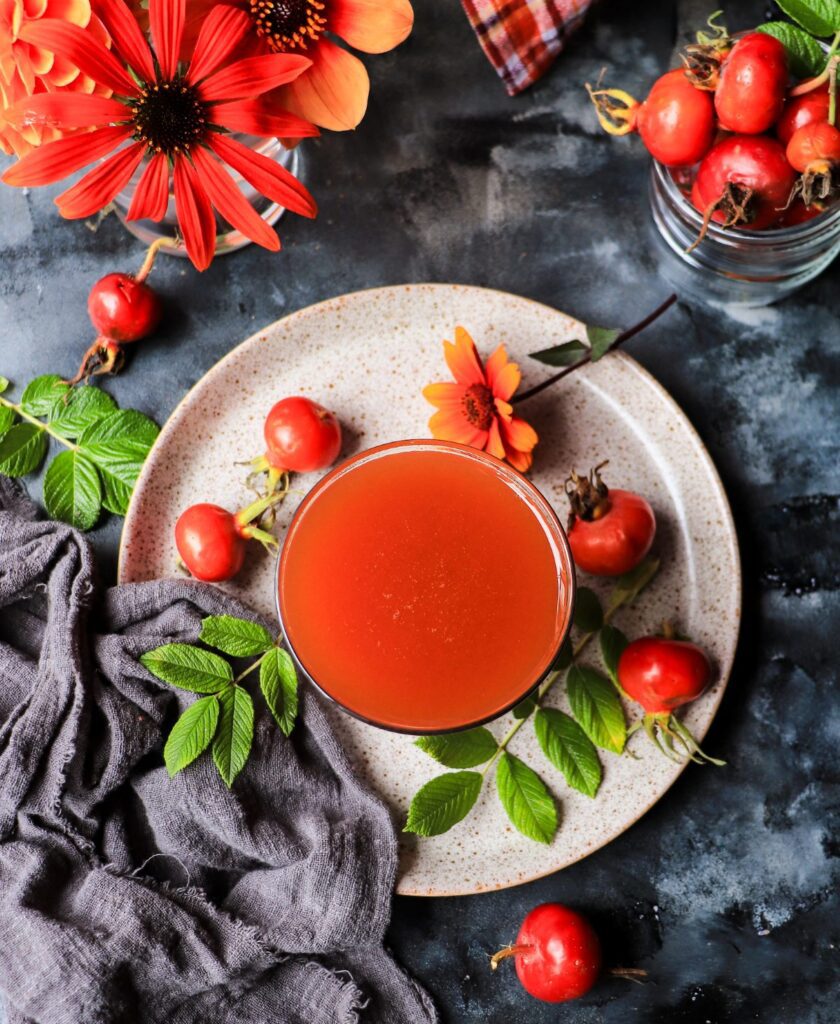
How to Make Homemade Rosehip Syrup
This simplified recipe skips prep work, such as removing seeds and hairs. It’s fast and aims to preserve vitamins.
First, combine rosehips with water and simmer for 15 minutes. Gently mash the fruit to release juice.
Strain the mixture through a fine-mesh sieve to remove skins, seeds, and hairs. Strain a second time if needed.
Add sugar to the concentrate. Simmer again briefly, stirring until the sugar dissolves.
Your rosehip syrup is ready to use. Some cloudiness is normal, but you can pass the syrup though a sieve or cheesecloth, if you wish.
How to Use Rosehip Syrup
Here’s how you can use rosehip syrup:
- Use it as a sweetener to make a tasty fall tea.
- Use rosehip syrup as a sweetener in cocktails. It pairs well with gin, vodka, or rum.
- Simply add a little into your water for a fun infused version.
- Drizzle it over pancakes, waffles, crepes, or French toast for a sweet topping.
- Stir a little rosehip syrup into your yogurt, oatmeal, or chia pudding for added sweetness and nutritional value.
- Add a tablespoon to your smoothie for a subtle, fruity flavour.
- Drizzle your ice cream.
I hope you enjoy this homemade rosehip syrup recipe and will give it a try. If you try it, please let me know in the comment section below, send me an Instagram message, or share your photos by adding the hashtag #havocinthekitchen.
Cheers!
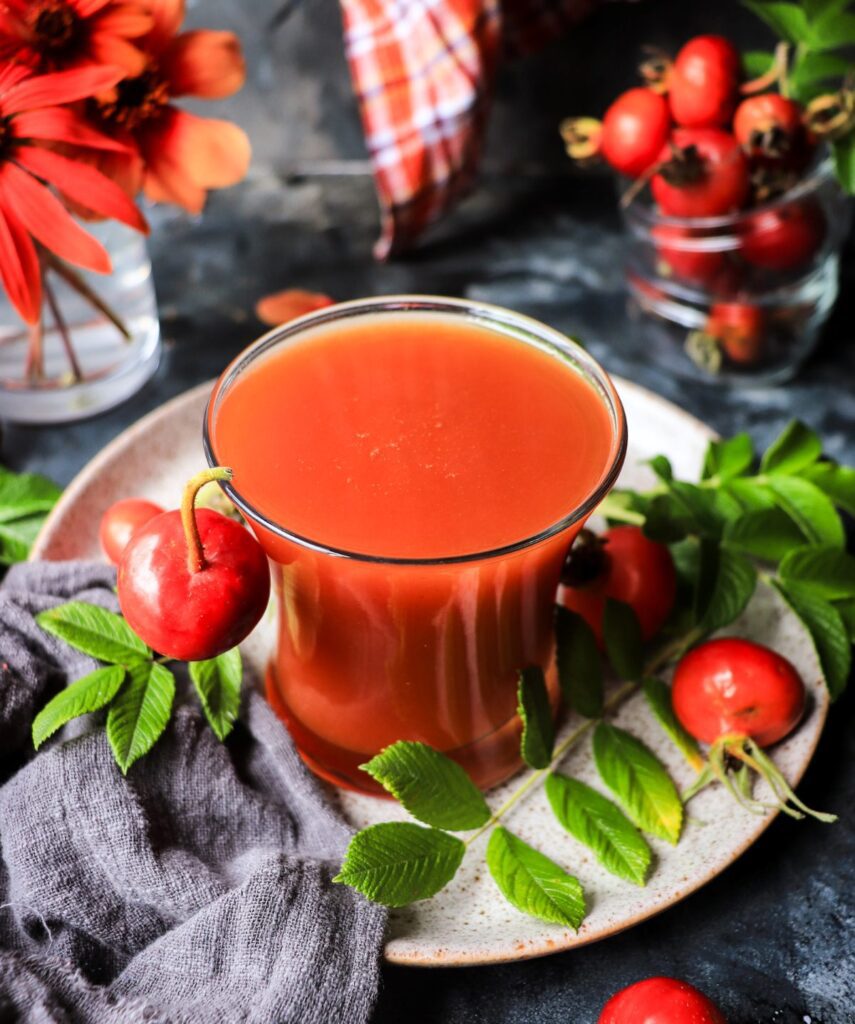


Hi – I’m Ben, a blogger, recipe developer, and food photographer. I’m glad you’re here! I hope you will enjoy hundreds of delicious recipes and a pinch of havoc in the kitchen.
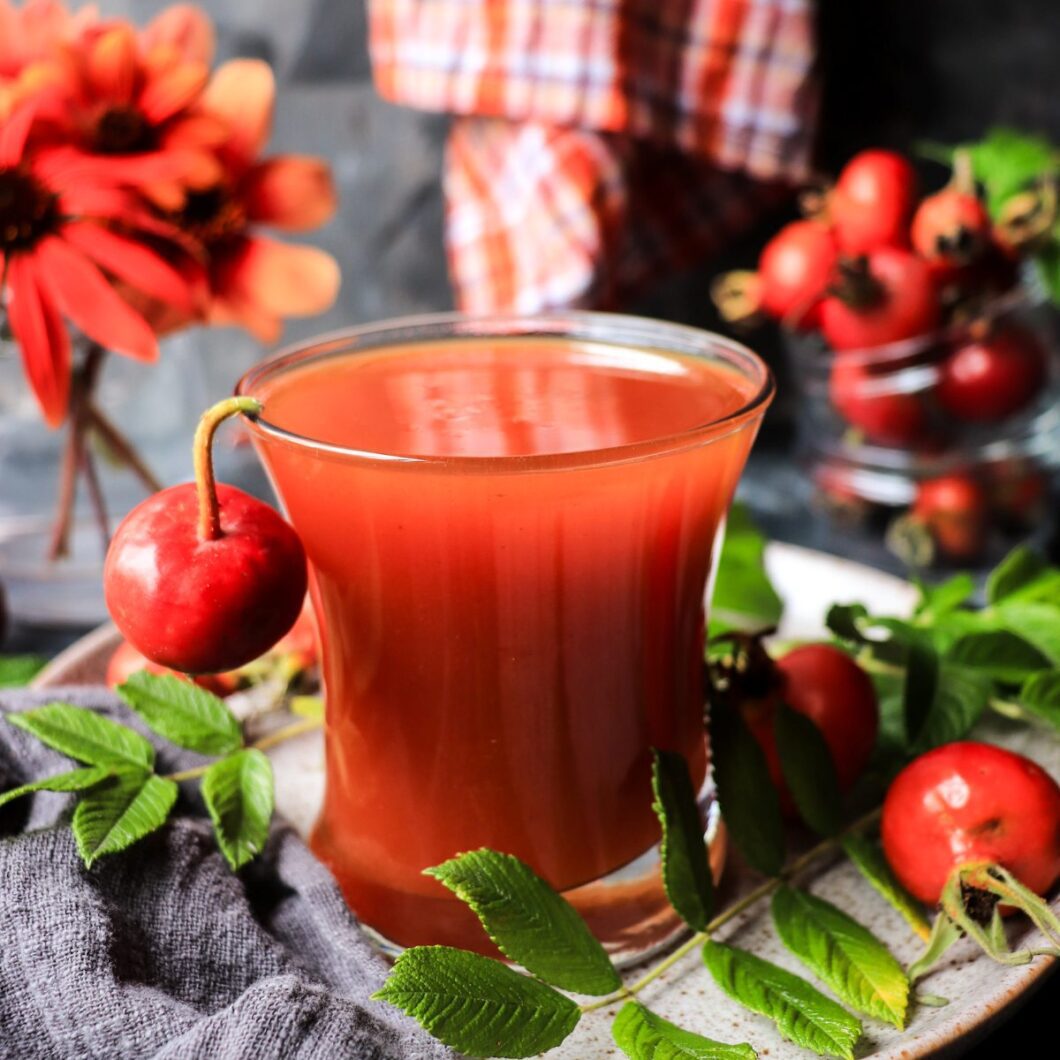




Would be fantastic for some homemade crepes or pancakes!